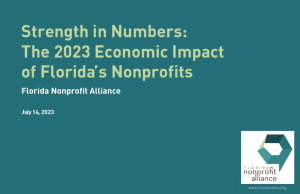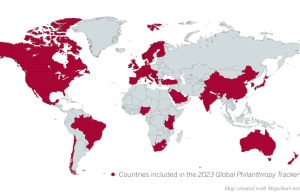By Bob Raffo
The health of a nonprofit’s finances is almost always a reflection of the overall health of the organization. With donations and funding in constant flux, it’s no longer simply enough to diversify revenue streams and ensure that your Form 990 is accurate.
The best thing that a nonprofit manager can do to set the organization up for sustainable financial success is to plan — honestly, cooperatively, and regularly.
Here are the top seven things nonprofit managers keep in mind when planning their financial future:
Budget Realistically
There’s an inherent practice in nonprofit budgeting of being overly generous about projected annual revenues. Maybe it’s a major donor who you think can give more this year, or an optimistic outlook on how your organization’s expenses can be cut. It might seem like a no-brainer, but unrealistic budgeting is often the first and biggest mistake made by managers.
Regardless of your unique circumstances, the uncertainty and upheaval in today’s world — whether economic, political or societal — means that you should be doubling down on realistic budgeting. Always be planning for the curtailment of revenue streams and have these budget conversations three-to-six-months before your fiscal year-end. Being honest about revenue projections and steering clear of “maybe” income will help you avoid scrambling to backfill unexpected deficits if they occur.
When budgeting, keep in mind the need for reserves. Every nonprofit should have enough money in its coffers to carry the organization through a wind down, transfer or closure. Nonprofit managers have to has to determine what that amount would be according to its own situation. Reputation is a big deal in the nonprofit world, and if you do have to cut services or hand-off operations, having adequate reserves will help your program and mission stay alive.
Plan for the Worst
No matter how faithful a donor or foundation is to an organization, financial managers should not rely solely on the same funding sources year-over-year. For example, when the pandemic hit in 2020, nonprofits reliant on fees and donations from in-person events were forced to pivot online. If that possibility was not on your radar, the time that it takes to shift to virtual programming could mean large, unanticipated funding losses.
Think through all scenarios, and plan for the worst. Questions like “What if 20% of our charitable donations stop overnight?” and “What happens if our most faithful donor loses their fortune tomorrow?” can help you anticipate situations that might otherwise prove devastating.
Embrace Contingency Planning
Set up a contingency plan that accounts for all cash-on-hand and monthly operating costs. This plan should include projections for both revenues and expenses, as well as include triggers for what happens if the budget falls short at certain times during your fiscal year.
A good contingency plan answers what a nonprofit will do if, for example, you expected to raise a certain amount of money by X date, and how you will respond when your fundraising comes up short. Nonprofits should always have a Plan B and know what to do in the event of a sudden or gradual loss of revenue. Revisit this contingency plan every few months.
Diversify Your Revenue Sources
A lot of nonprofit financial managers have gotten better at this during the past decade. Depending solely on one private foundation, a handful of key donors, or lots of individual gifts can really impact your ability to be effective if there is a sudden financial change. Identify multiple sources of revenue – individuals, foundations, public grants, programming and event fees, etc. – to help mitigate this risk.
This comprehensive report provides current salary information on 232 nonprofit positions from entry level to the executive office, and complete data on 94 employee benefit offerings including healthcare, retirement, executive perks, vacation, and much more.* Includes detailed salary and benefits trend data for 2023.
Set Realistic Fundraising Goals
There is an inherent friction between accounting departments and the folks who are out raising the money, so it’s important to intentionally design ways for the two areas to regularly work together. This helps to build trust, create buy-in from all parties, and agree on realistic budgets and fundraising projections.
As an example, say a major gift is still not in hand three years after it was pledged. The accounting department thinks it should come off the books, but development says the donor is still good for it. Conversely, the accounting department might assume donors who recently contributed will give again, but development has information that the donor is shifting priorities. When accounting and development work together, you can more accurately predict who can (and will) donate, how much, and when to expect the money.
Embrace Financial Storytelling
Nonprofit managers often don’t want to talk about money, but donors need to know that their contributions are being allocated responsibly. Although “creative” and “storytelling” are not often used to describe finances, financial storytelling is one of the best tools nonprofits have for sharing mission and engage and upsell donors.
Succinct, emotional communications that show how you’re using donor funds to meet your mission will help bolster your fundraising efforts. Specifics like, “We were able to provide care to 500 people because of your gift,” or “Our workshops cover 60% of the cost of our services, and we rely on generous donors like you to fill the remaining gap,” help illustrate how your organization is accomplishing its mission through responsible fiscal allocation and management.
Timely and Accurate Financial Reporting is Key
Many nonprofits don’t have professional accounting staff in house or rely on outside service providers for financial reporting. If these reports are late or inaccurate, Board and management have no way to know where the organization stands financially.
The sooner you can track your finances in real-time, the better. Managers need to work off real numbers and have plans in place to pivot should your operating costs increase, revenue falls through, or things simply go awry.
Setting realistic budgets, agreeing on fundraising projections and priorities, planning for “Plan B,” and keeping all stakeholders in the loop on your real financial picture will help set your nonprofit up for long-term success. And if you think you could benefit from outside financial expertise, get it. It’s one of the smartest line items you can put on your books.
*****
Bob Raffo is the founder of Hood & Strong’s Not-for-Profit Service Group and served as the firm’s Managing Partner from 2008-2018. His email is [email protected]









